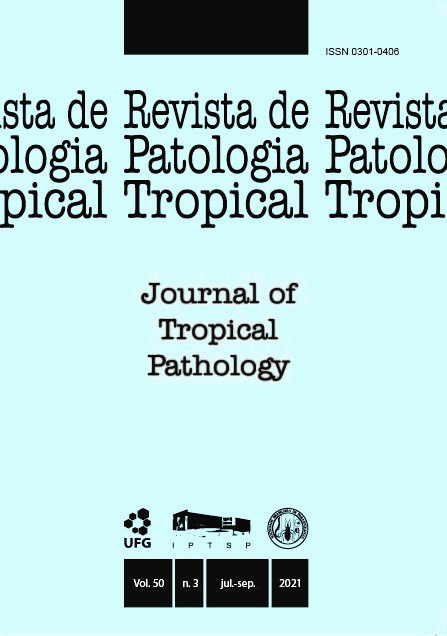A preliminary study on the distribution of breeding sites of BIOMPHALARIA GLABRATA in the municipality of peri mirim, a low endemicity area for schistosomiasis in northeast Brazil
DOI:
https://doi.org/10.5216/rpt.v50i3.67413Resumo
Information on areas colonized by snails that transmit Schistosoma mansoni is essential for planning schistosomiasis control measures. Therefore, the purpose of this study was to map the natural breeding sites of Biomphalaria spp. in the municipality of Peri Mirim, Maranhão, Brazil. The snails were manually collected and the breeding sites were geo-referenced (seven in the urban area and five in flooded fields), from November 2017 to March 2018. In the laboratory, the snails were examined for the presence of larval stages of S. mansoni identified by morphology and internal anatomy analysis. While no snails were found in the urban area, sixteen B. glabrata were collected in the flooded fields. No S. mansoni or other trematode infections were detected. Wild rodents, most likely Holochilus sciureus that could act as S. mansoni reservoirs, were also found in the flooded fields. These data indicate possible risk areas for further outbreaks of schistosomiasis transmission in the municipality of Peri Mirim.
KEY WORDS: Baixada Maranhense; malacological survey; planorbidae; spatial analysis.
Downloads
Downloads
Publicado
Como Citar
Edição
Seção
Licença
The manuscript submission must be accompanied by a letter signed by all authors stating their full name and email address, confirming that the manuscript or part of it has not been published or is under consideration for publication elsewhere, and agreeing to transfer copyright in all media and formats for Journal of Tropical Pathology.

